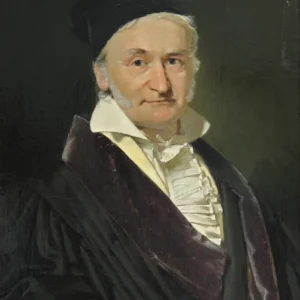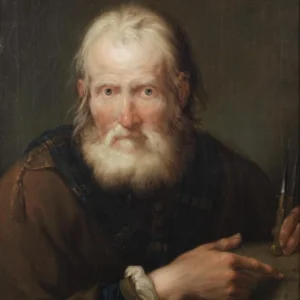Alan Turing, a mathematician, logician, and cryptanalyst, is one of the most influential figures in the history of computing and artificial intelligence. Born on June 23, 1912, in London, England, Turing’s groundbreaking work during World War II and his contributions to the development of modern computing have left an indelible mark on science and technology. This article delves into his life, achievements, and lasting impact on the world.
Early Life and Education
Birth and Background
Alan Turing was born to Julius Mathison Turing and Ethel Sara Turing. From a young age, he exhibited extraordinary intellectual capabilities and a deep curiosity for mathematics and science. His early education at Sherborne School laid the foundation for his future academic pursuits.
University Education
Turing attended King’s College, Cambridge, where he excelled in mathematics. In 1935, at the age of 22, he was elected a fellow of King’s College due to his work on probability theory. He later pursued a Ph.D. at Princeton University under the supervision of Alonzo Church, a prominent mathematician and logician. Turing’s doctoral thesis, “Systems of Logic Based on Ordinals,” introduced innovative ideas that would shape the field of theoretical computer science.
The Birth of Modern Computing
The Turing Machine
In 1936, Turing published his seminal paper, “On Computable Numbers, with an Application to the Entscheidungsproblem.” In this paper, he introduced the concept of the Turing machine, an abstract mathematical model that could simulate any algorithmic process. The Turing machine became the foundation of computer science, providing a formal framework for understanding computation and algorithms.
The Universal Turing Machine
Turing’s concept of the universal Turing machine, a machine capable of simulating any other Turing machine, laid the groundwork for the development of general-purpose computers. This idea revolutionized the way scientists and engineers approached computation and paved the way for the creation of modern digital computers.
Breaking the Enigma Code
Bletchley Park and the Enigma Machine
During World War II, Turing joined the Government Code and Cypher School at Bletchley Park, where he played a pivotal role in breaking the German Enigma code. The Enigma machine, used by the Germans to encrypt military communications, was considered unbreakable due to its complex encryption algorithms.
The Bombe Machine
Turing developed the Bombe machine, an electromechanical device designed to decipher Enigma-encrypted messages. By automating the process of testing potential settings for the Enigma machine, the Bombe significantly reduced the time required to decode messages. Turing’s work at Bletchley Park was instrumental in providing the Allies with crucial intelligence that contributed to the eventual defeat of the Axis powers.
Impact on the War Effort
Turing’s contributions to codebreaking at Bletchley Park are estimated to have shortened the war by several years and saved countless lives. His innovative methods and relentless dedication to cracking the Enigma code demonstrated his exceptional problem-solving skills and his ability to think outside the box.
Post-War Contributions
Early Computing Projects
After the war, Turing continued to work on the development of electronic computers. He joined the National Physical Laboratory (NPL) in the United Kingdom, where he designed the Automatic Computing Engine (ACE), one of the earliest designs for a stored-program computer. Although the full-scale ACE was never built during his time at the NPL, Turing’s design influenced subsequent computer development.
The Turing Test
In 1950, Turing published a groundbreaking paper titled “Computing Machinery and Intelligence,” in which he proposed the idea of the Turing Test. The Turing Test is a method for determining whether a machine can exhibit human-like intelligence. According to Turing, if a machine could engage in a conversation with a human without being distinguished from a human, it could be considered intelligent. The Turing Test remains a fundamental concept in the field of artificial intelligence.
Personal Life and Challenges
Personal Struggles
Despite his professional achievements, Turing faced significant personal challenges. As a gay man in a time when homosexuality was illegal in the United Kingdom, he was subjected to discrimination and persecution. In 1952, Turing was prosecuted for “gross indecency” and underwent chemical castration as an alternative to imprisonment. The conviction led to his loss of security clearance and significantly impacted his career and personal life.
Tragic Death
On June 7, 1954, Alan Turing was found dead in his home in Wilmslow, Cheshire. His death was ruled a suicide by cyanide poisoning, although some have speculated about the circumstances surrounding his demise. Turing’s untimely death at the age of 41 marked the loss of one of the most brilliant minds of the 20th century.
Legacy and Impact
Recognition and Honors
In the years following his death, Turing’s contributions to science and technology gained widespread recognition. In 2009, British Prime Minister Gordon Brown issued a public apology for Turing’s treatment, and in 2013, Queen Elizabeth II granted him a posthumous royal pardon. Turing’s legacy is celebrated through numerous awards, honors, and memorials, including the Turing Award, often referred to as the “Nobel Prize of Computing.”
Influence on Modern Computing
Alan Turing’s pioneering work laid the foundation for the digital age. His concepts of the Turing machine and the universal Turing machine provided the theoretical basis for computer science, while his practical contributions to codebreaking and early computing projects accelerated the development of modern computers. Turing’s ideas continue to shape the fields of artificial intelligence, cryptography, and computational theory.
Cultural Impact
Turing’s life and achievements have been the subject of numerous books, films, and documentaries. The 2014 film “The Imitation Game,” starring Benedict Cumberbatch as Turing, brought his story to a wider audience and highlighted his invaluable contributions to the war effort and computing.
Conclusion
Alan Turing’s extraordinary intellect, innovative thinking, and unwavering dedication to solving complex problems have left an indelible mark on the world. As the codebreaker who shaped modern computing, his legacy continues to inspire generations of scientists, mathematicians, and engineers. Despite the personal challenges he faced, Turing’s contributions to humanity stand as a testament to his brilliance and enduring impact on the world of technology and beyond.



